This crisp Rice and Poha Dosa uses no dal at all and is just the perfect low sodium, low potassium recipe suitable for a Renal Diet followed by people with Chronic Kidney Disease (CKD).
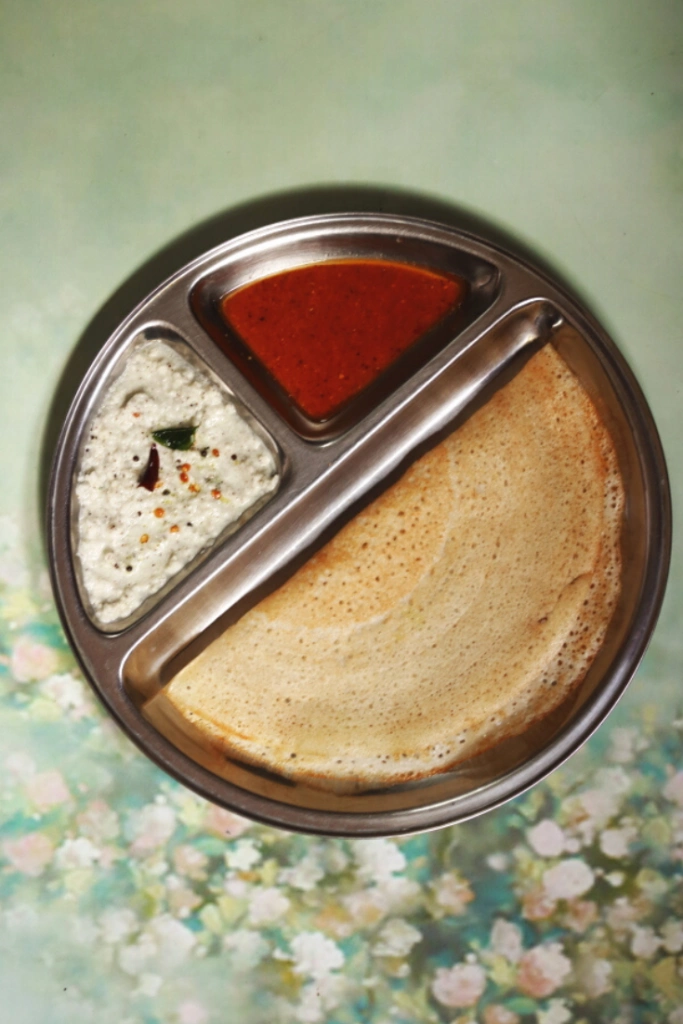
As many of this blogs followers have noticed, I am posting recipes that are suitable for people combating Chronic Kidney Disease (CKD). A renal diet calls for many many restrictions and that means variety in every day meals can be a challenge, especially in advanced stages of the disease. These recipes I am trying are my attempt to keep familiar and favourite dishes on the menu by adapting them to the low potassium, low sodium, low phosphorous restrictions.
Even more specifically, I am trying to make dishes that the whole family can eat together. This reduces the feeling of “being on a diet” for the person and also reduces the amount of cooking we have to do at home.
Coming back to this Rice and Poha Dosa, the batter uses no dal and is fermented naturally. (I avoid using cooking soda and fruit salts like Eno because they are sodium- and potassium-based respectively.)
- As far as the texture is concerned, the Rice and Poha Dosa can be made as thick or as thin as you want to; there are days when I make a thick and soft dosa, while other days I make a thin and crisp dosa. Just the variation in texture can sometimes make all the difference. 🙂
- As for the taste, this dosa has a relatively neutral taste profile and just the slightest bit of a sweet after taste; this is not noticeable unless you eat the dosa by itself.
Some Tips to Make the Perfect Batter for the Rice and Poha Dosa
- Use any short-grained rice to make this batter. I tried it both with Surti Kolam and Ponni rice. I will try the next batch with parboiled rice.
- The fenugreek seeds are a must in this batter as they help the batter ferment. Soak the methi seeds with the rice for at least 3 hrs, till the methi seeds swell a bit and soften.
- Add the Poha to the soaked rice + fenugreek seeds just about 5 mins before you grind the batter. All you need is for the poha to soften and swell; and that takes less than two minutes. If you soak the Poha from the beginning the mix will become sour very quickly.
- The consistency of the batter should be such that it flows off a spoon slowly and in thick ribbons.
- Let the Rice and Poha batter ferment for at least 8 hours. It will not rise as much as the regular idli batter but will be very aerated when you mix it with a spoon.

Other Dishes You Can Make with This Rice and Poha Batter
This vegan, gluten-free No Dal Dosa is made with the same batter that I used to make:
So you make one batter and serve three different dishes.
Rice and Poha Dosa: Potassium and Sodium Values
This recipe yields 12 x 8″ dosas, each with only 28 mg of Potassium and 52 mg of sodium (assuming you add 1/4 tsp salt to the batter). That means that even a filling breakfast of 3 dosas would mean a 84 mg Potassium and 154 mg of Sodium per meal.
If you want some more low-potassium, low-sodium recipes, do take a look at my list of renal diet recipes.
Please note that I am not a trained dietician or nutritionist. These are renal diet recipes are those that I use at home for a family member with Chronic Kidney Disease and they have worked with us. Do check with your renal dietician or nephrologist about the suitability of these recipes for you.
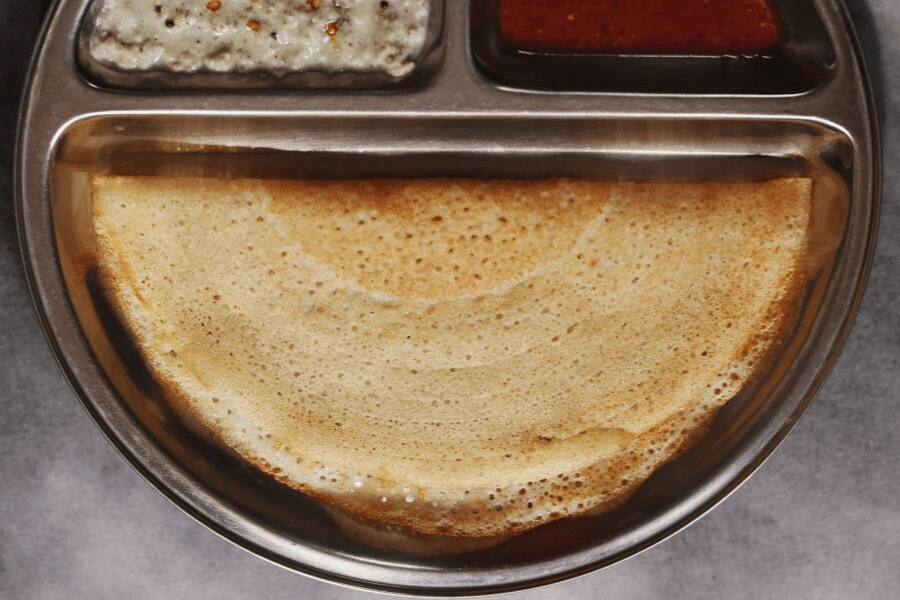
How to Make Rice and Poha Dosa (No Dal Dosa Suitable for a Renal Diet)
- Making the Batter
- Wash 1 cup rice under running water and drain.
- To the washed rice, add 1/2 tsp methi or fenugreek seeds.
- Now, add 2 cups water and let the rice soak for at least 3 hours. In colder weather, you may need to soak the rice for at least 5 hours. The soaking time is primarily for the fenugreek seeds; check that they are soaked well.
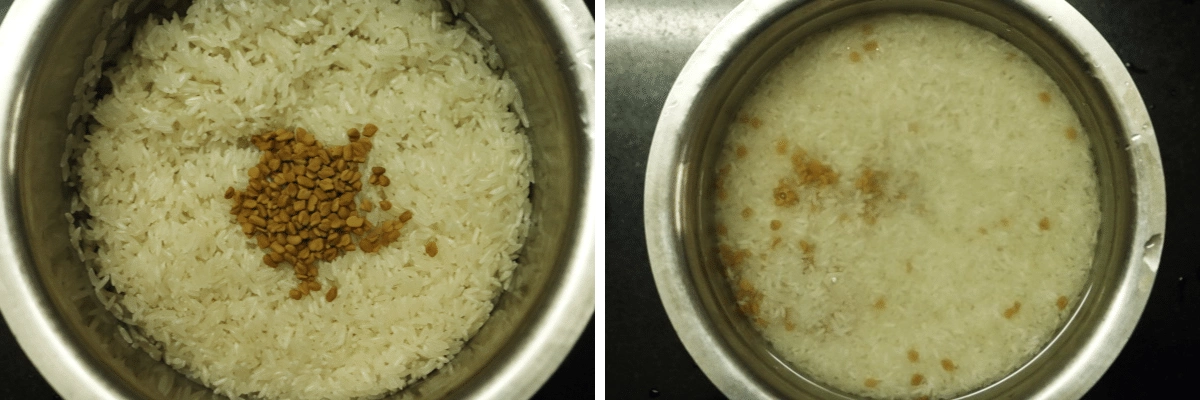

- After 3 hours, just 5 minutes before grinding the batter, add 1/2 cup poha or beaten rice flakes to the soaked rice.

- Let the poha soak for 5 minutes and then completely drain all the water from the soaked ingredients.
- Now, transfer the soaked ingredients to a grinder.
- First, add 1/3 cup water and grind the ingredients to a coarse paste.
- Now, add a further 1/3 cup water, a little at a time, and grind the mix to a smooth batter.
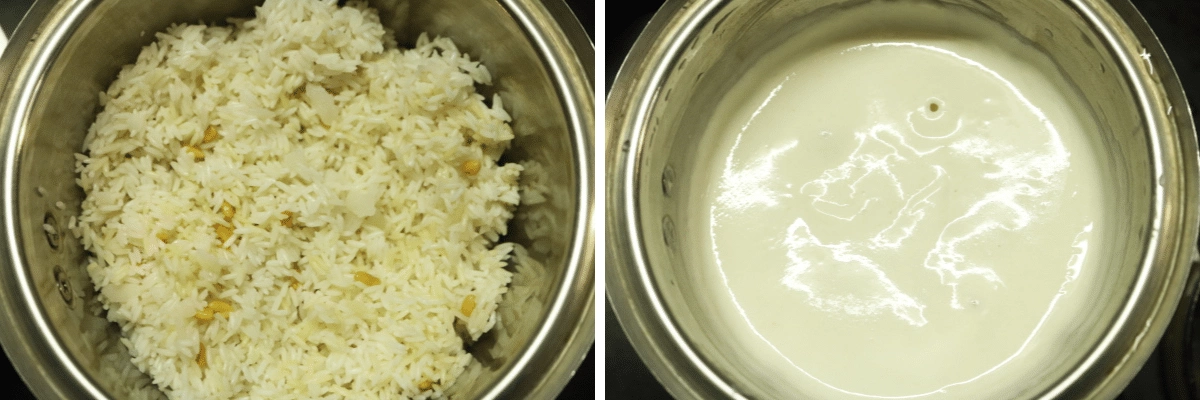
- Transfer to a vessel and check the consistency of the batter. The batter should slide off a spoon and form ribbons.
- Cover and keep the batter in a warm place to ferment for at least 8 hours. This batter will rise but just a little. It will not rise as much as the regular rice and udad dal idli batter.
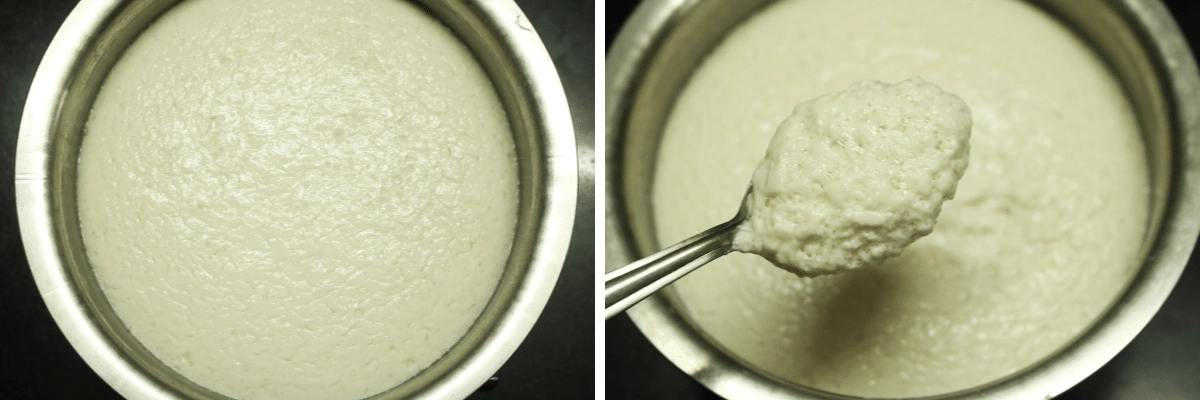
- When the batter has fermented, add salt and mix with a gentle hand. For a renal diet, do keep the salt within permitted limits.
- Making the Rice and Poha Dosa
- Take as much batter as needed in a separate vessel. You need about 1/4 cup per 8″ dosa.
- Add a little water to get a thick batter that flows off a spoon.

- Over a medium flame, warm a non-stick tava. Cook the dosa on medium heat throughout, else it will char rather quickly.
- When the tava is warm, grease the tava with a few drops of oil. You do not need a lot of oil.
- Now pour 1/4 cup batter in the centre of the tava and use a heavy-ladle to quickly spread the batter into a dosa using circular motions.
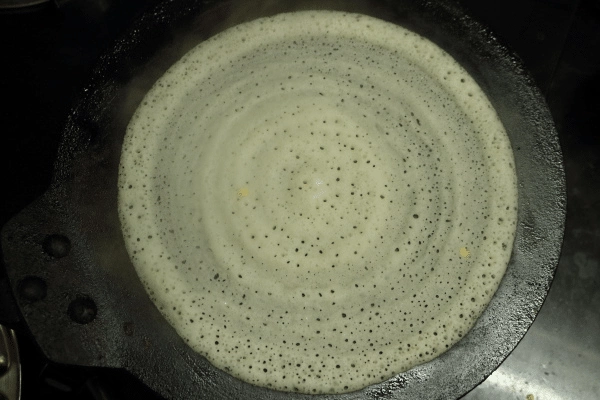
- Let the dosa cook till the surface dries out a bit.
- When you see the edges turning brown, use a sharp turning spatula, loosen the dosa from the tava; starting from the edges and working your way towards the middle.
- Flip over and cook for a few seconds.

- Serve hot Rice and Poha Dosa immediately with Chutney Powder, Coconut Chutney, or in the case of a renal diet, with Cranberry Chutney.
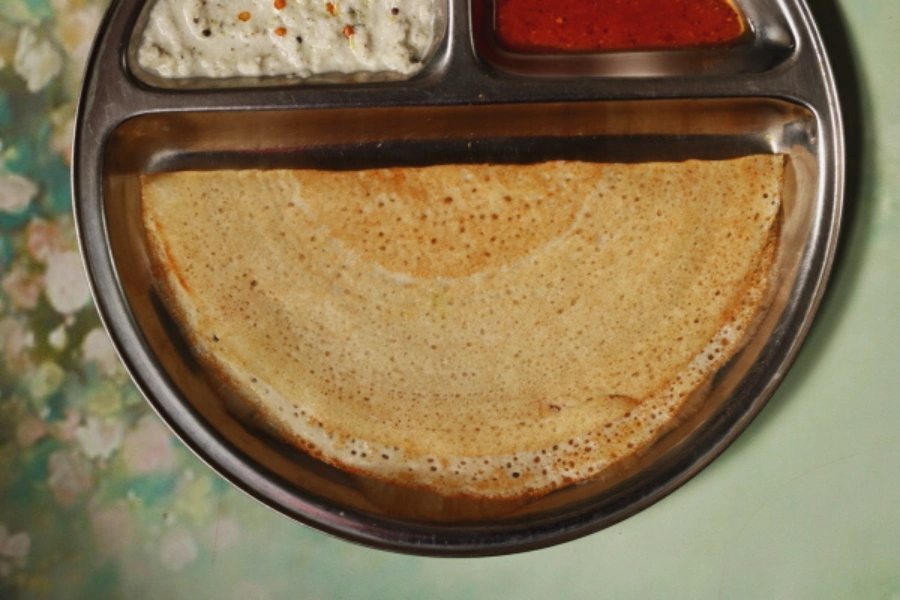
Recipe for Rice and Poha Dosa (A No Dal Dosa; Low Potassium, Low Sodium, Low Phosphorous Recipe for Renal Diet)
Rice and Poha Dosa (No Dal Dosa; Suitable for Renal Diet)
Equipment
- Large Bowl
- Spoon and a Heavy Spatula
- Grinder
- Tava
Ingredients
- 1 Cup Rice (200 gms)
- 1/2 Cup Poha (40 gms)
- 1/2 tsp Methi Seeds (3 gms)
- 2.75 Cups Water
- Salt to Taste
- Oil to make the dosa
Instructions
- Wash 1 cup rice under running water and drain.
- Add 1/2 tsp methi or fenugreek seeds, and 2 cups water.
- Soak the rice for at least 3 hours. In colder weather, you may need to soak the rice for at least 5 hours till the fenugreek seeds puff up well.
- 5 minutes before grinding the batter, add 1/2 cup poha or beaten rice flakes to the soaked rice.
- Let the poha soak for 5 minutes and then completely drain all the water from the soaked ingredients.
- Transfer the soaked ingredients to a grinder.
- Using 3/4 cup water, grind the ingredients to a smooth batter. Add 1/2 cup water first and 1/4 later in small quantities.
- Transfer to a vessel and check the consistency of the batter. The batter should slide off a spoon and form ribbons. If not, add just 1-2 tsps of water.
- Cover and keep the batter in a warm place to ferment for at least 8 hours. This batter will rise a little and become spongy.
- Add salt and mix with a gentle hand. For a renal diet, do keep the salt within permitted limits.
- Add enough water to make a dough that flows off a spoon to form ribbons.
- Over medium flame, warm a 10" tava. Use only medium heat throughout.
- Add a few drops of oil and grease the surface of the tava.
- Pour 1/4 cup of batter in the centre of the tava.
- Using a heavy ladle and a circular motion, quickly spread the batter to form an 8" dosa.
- Let the dosa cook till the edges start to brown and the surface starts to dry out.
- Using a sharp turning spatula, loosen the dosa from the tava, starting from the edges and working your way to the centre.
- Flip the dosa and cook for a few seconds.
- Serve the hot Rice and Poha Dosa immediately with Chutney Powder, Coconut Chutney, or in the case of a renal diet, with Cranberry Chutney.

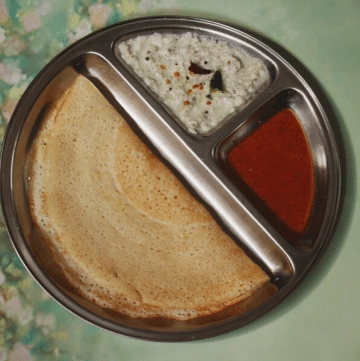

I absolutely loved this yum rice and poha dosa. Ideal for someone who has to avoid protein too. My dinner for tomorrow can be this yum dosa. Love it Aruna.